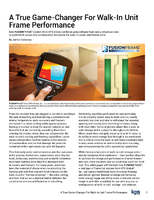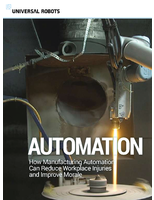Retail Software provides integrated Linux POS platform.
Press Release Summary:
IBM Retail Environment for SUSE LINUX v2 consists of SUSE LINUX Enterprise Server-based distribution for IBM xSeries® store servers and IBM POS devices. Open platform enables retailers to utilize Linux(TM) features and run it at POS and back-office servers. Functionality includes automatic flashing of POS BIOS; problem determination, including dump button enablement; operator guidance; system-wide configuration and change management; and GUI.
Original Press Release:
IBM Retail Environment for SUSE LINUX V2 Provides an Integrated Linux POS Platform to Enable Most Leading-Edge Applications and Technologies
At a glance
IBM Retail Environment for SUSE LINUX Version 2:
Offers retail functions such as those provided by IBM's 4690 features, such as:
Server-based POS loading and booting
Industry-standard system-wide configuration and change management
Fast problem determination with single-step dump button support
Combined server/terminal support
Client preload GUI
Remote Management Agent support for systems management
Helps reduce total cost of ownership through expanded versatility, scalability in the store, and single-source technical support
Combines a reliable, enterprise-class Linux distribution with a retail-friendly support and maintenance model
Offers enhanced functionality designed to help streamline installation, configuration, and systems management
Offers a choice of LDAP or new Dynamic POS client configuration, which could potentially reduce the time required to install and maintain the POS clients
Overview
IBM Retail Environment for SUSE LINUX V2 (IRES V2) consists of a SUSE LINUX Enterprise Server (SLES) based distribution for IBM xSeries® store servers and select IBM point of sale (POS) devices that includes features tailored for the retail environment. It offers retailers an open, cost-effective, retail-optimized platform for delivering next-generation retail solutions. IBM hardware and drivers are pretested and supported for IRES.
With IRES V2, on demand retailers can acquire the advantages of Linux(TM), run it at the point of sale and on back-office servers, enjoy robust functionality drawn from many years of IBM retail experience, and receive outstanding technical support from IBM. Like IRES V1, IRES V2 includes a retail-optimized distribution of Novell's robust SUSE LINUX Enterprise Server called Novell Linux Point of Service (previously named SUSE LINUX Retail Solution or SLRS). IRES V2 adds function gained from many years of experience in retail solutions, such as automatic flashing of POS BIOS, improved problem determination including dump button enablement, improved operator guidance, a simplified configuration graphical user interface, and systems management. IRES supports select IBM SurePOS(TM) systems, IBM xSeries hardware, and IBM middleware. IRES V2 also includes a cost-effective, retail-friendly support and maintenance model that helps deliver the long lifecycle and rapid response retailers need to help maintain high uptime in the store.
IRES can scale to many different POS application solutions, giving you the flexibility to run it on most systems ranging from non-GUI clients to full graphic Java(TM)-based solutions. In addition, customers who purchased the IRES V1 product and are current with their software maintenance PRPQs can order this product, IRES V2, at no additional cost. Version 1 customers who are not already Passport Advantage® customers will need to enroll in Passport Advantage.
This announcement fulfills the requirements of the Preview Software Announcement 205-005 , dated January 11, 2005.
For information on IBM's Statement of Limited Warranty, contact your IBM representative or reseller. IBM makes no representation or warranty regarding third-party products or services.
The information in IBM announcement letters is subject to change without notice. Consult the IBM Sales Manual, or your IBM marketing representative or reseller, for the most current information.
Planned availability dates
July 22, 2005: Electronic software delivery including English only documentation
August 19, 2005: Media with translated documentation available on the IBM Web site




